Face Detection¶
- SDK.detect_faces(self: tfsdk.SDK) → List[tfsdk.FaceBoxAndLandmarks]¶
Detect all the faces in the image and return the bounding boxes and facial landmarks. This method has a small false positive rate. To reduce the false positive rate to near zero, filter out faces with score lower than 0.90. Alternatively, you can use the
FACEDETECTIONFILTERconfiguration option to filter the detected faces. The face detector has a detection scale range of about 5 octaves.tfsdk.ConfigurationOptions.smallest_face_heightdetermines the lower of the detection scale range. E.g., settingtfsdk.ConfigurationOptions.smallest_face_heightto 40 pixels yields the detection scale range of ~40 pixels to 1280 (=40x2^5) pixels.- Returns
A list of
FaceBoxAndLandmarksrepresenting each of the detected faces. If not faces are found, the list will be empty. The detected faces are sorted in order of descending face score.
The recall and precision of the face detection algorithm on the WIDER FACE dataset:
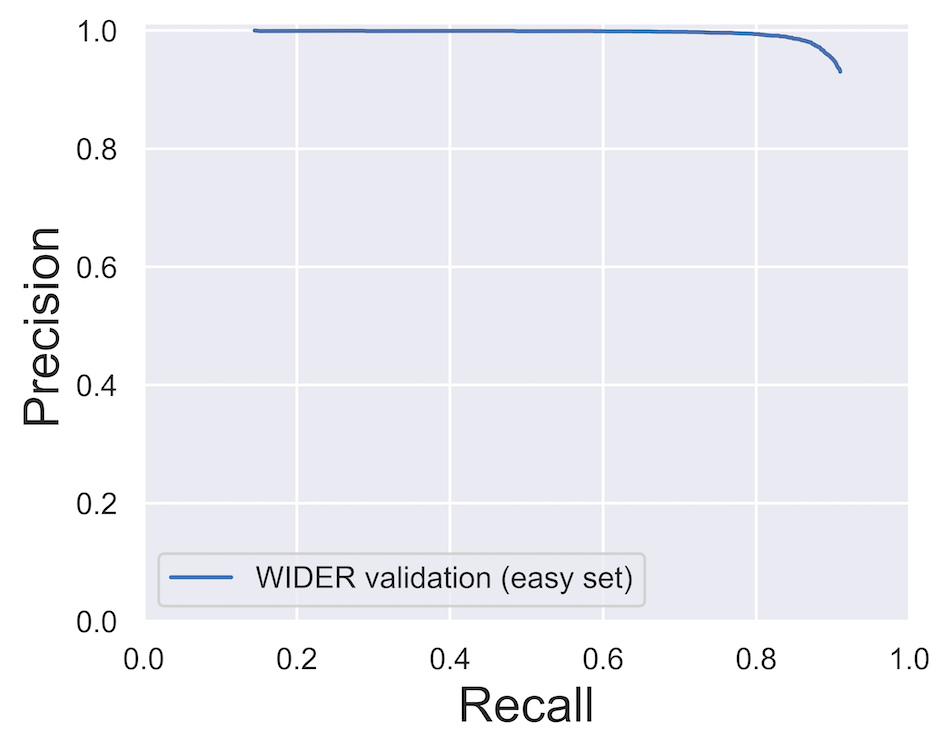
The effect of face height on similarity score:


- SDK.detect_largest_face(self: tfsdk.SDK) → Tuple[bool, tfsdk.FaceBoxAndLandmarks]¶
Detect the largest face in the image. This method has a small false positive rate. To reduce the false positive rate to near zero, filter out faces with score lower than 0.90. Alternatively, you can use the
FACEDETECTIONFILTERconfiguration option to filter the detected faces. Seetfsdk.SDK.detect_faces()for detection range.- Returns
A bool indicating if a face was detected and the corresponding
tfsdk.FaceBoxAndLandmarks, in that order.
- SDK.get_face_landmarks(self: tfsdk.SDK, face_box_and_landmarks: tfsdk.FaceBoxAndLandmarks) → Tuple[tfsdk.ERRORCODE, List[tfsdk.Point[106]]]¶
Obtain the 106 face landmarks.
- Parameters
face_box_and_landmarks -
tfsdk.FaceBoxAndLandmarksreturned bytfsdk.SDK.detect_faces()ortfsdk.SDK.detect_largest_face().- Returns
The
tfsdk.ERRORCODEand list of the 106 face landmark points, returned in that order.
Obtain the 106 face landmarks.
The order of the face landmarks:
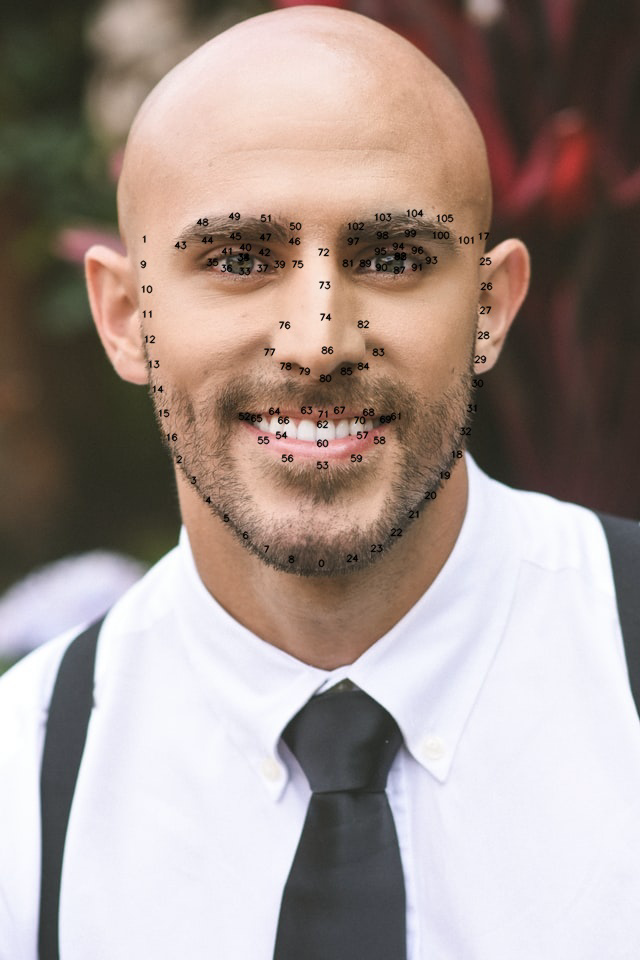
- SDK.extract_aligned_face(*args, **kwargs)¶
Overloaded function.
extract_aligned_face(self: tfsdk.SDK, face_box_and_landmarks: tfsdk.FaceBoxAndLandmarks, margin_left: int = 0, margin_top: int = 0, margin_right: int = 0, margin_bottom: int = 0, scale: float = 1.0) -> numpy.ndarray[numpy.uint8]
Extract the aligned face chip in a Numpy array. Changing the margins and scale will change the face chip size. If using the face chip with Trueface algorithms (ex face recognition), do not change the default margin and scale values.
- Parameters
face_box_and_landmarks - the
tfsdk.FaceBoxAndLandmarksreturned bytfsdk.SDK.detect_largest_face()ortfsdk.SDK.detect_faces().margin_left - adds a margin to the left side of the face chip (default = 0).
margin_top - adds a margin to the top side of the face chip (default = 0).
margin_right - adds a margin to the right side of the face chip (default = 0).
margin_bottom - adds a margin to the bottom side of the face chip (default = 0).
scale - changes the scale of the face chip (default = 1).
- Returns
Returns a numpy array containing the face chip.
extract_aligned_face(self: tfsdk.SDK, buffer_pointer: int, face_box_and_landmarks: tfsdk.FaceBoxAndLandmarks, margin_left: int = 0, margin_top: int = 0, margin_right: int = 0, margin_bottom: int = 0, scale: float = 1.0) -> tfsdk.ERRORCODE
Extract the aligned face chip in a Numpy array. Changing the margins and scale will change the face chip size. If using the face chip with Trueface algorithms (ex face recognition), do not change the default margin and scale values. This function override requires the caller to allocate the memory required for the face chip. The buffer size can be computed as follows: width = int((112+margin_left+margin_right)*scale), height = int((112+margin_top+margin_bottom)*scale), and therefore the buffer size is computed as: width * height * 3
- Parameters
buffer_pointer - a buffer allocated by the caller which the face chip will be written to.
face_box_and_landmarks - the
tfsdk.FaceBoxAndLandmarksreturned bytfsdk.SDK.detect_largest_face()ortfsdk.SDK.detect_faces().margin_left - adds a margin to the left side of the face chip (default = 0).
margin_top - adds a margin to the top side of the face chip (default = 0).
margin_right - adds a margin to the right side of the face chip (default = 0).
margin_bottom - adds a margin to the bottom side of the face chip (default = 0).
scale - changes the scale of the face chip (default = 1).
- Returns
The
tfsdk.ERRORCODE.
- SDK.save_face_image(self: tfsdk.SDK, face_image: numpy.ndarray[numpy.uint8], filepath: str, height: int = 112, width: int = 112) → None¶
Store the face image in JPEG file. If face image has non-standard size (112x112), must specify width and height.
- Parameters
face_image - the face chip as a numpy array, obtained from
tfsdk.SDK.extract_aligned_face().filepath - relative or absolute file path without a file extension.
height - the image height, computed as int((112+margin_top+margin_bottom)*scale).
width - the image width, computed as int((112+margin_left+margin_right)*scale).
- Returns
Error code, see
ERRORCODE
- SDK.estimate_head_orientation(self: tfsdk.SDK, face_box_and_landmarks: tfsdk.FaceBoxAndLandmarks) → Tuple[tfsdk.ERRORCODE, float, float, float]¶
Estimate the head orientation using the detected facial landmarks.
- Parameters
face_box_and_landmarks - the
tfsdk.FaceBoxAndLandmarksreturned bytfsdk.SDK.detect_largest_face()ortfsdk.SDK.detect_faces().- Returns
The
ERRORCODE, yaw, pitch, roll, in that order. Angles are in radians.
The accuracy of this method is estimated using 1920x1080 pixel test images. A test image:
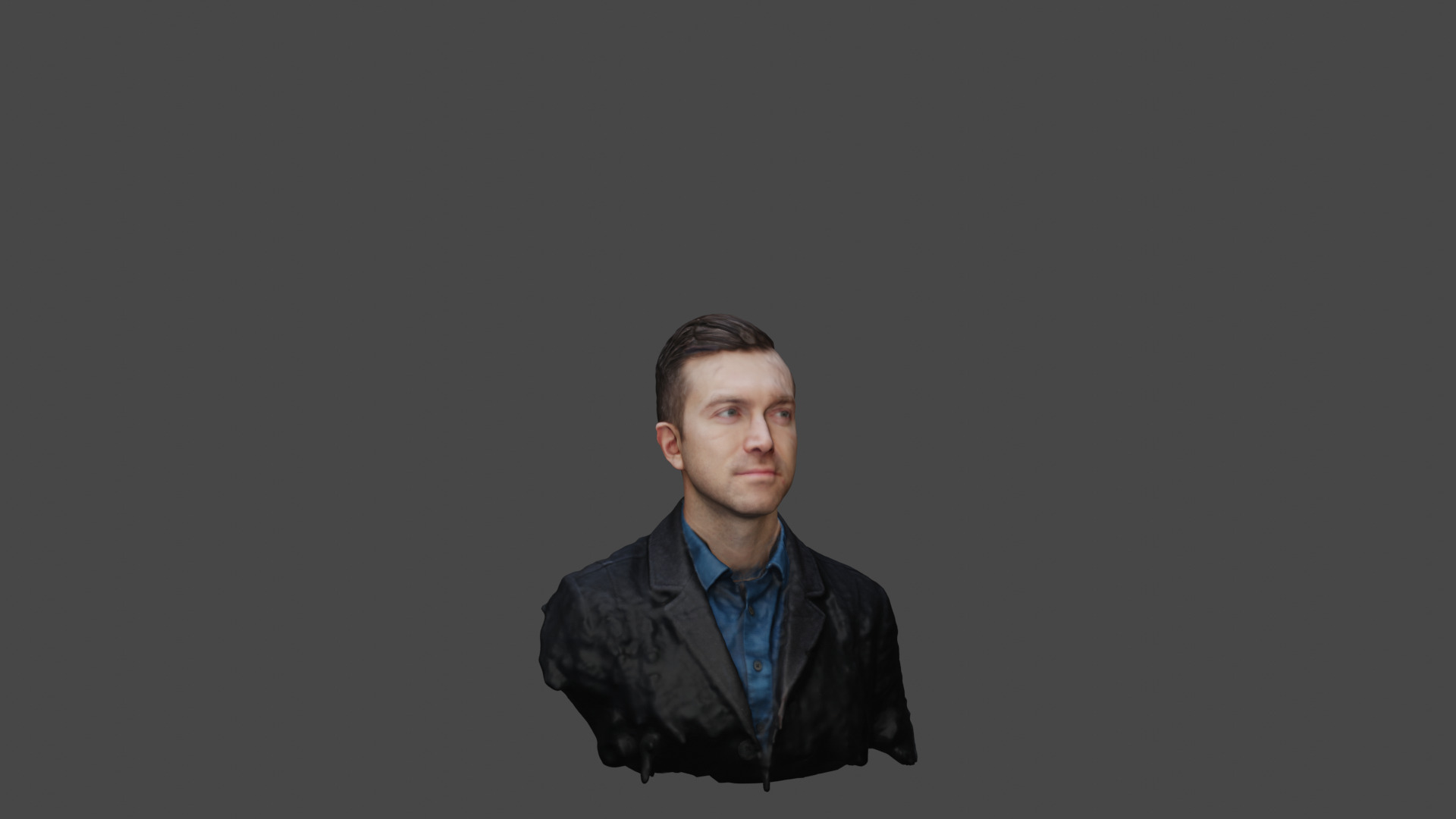
The accuracy of the head orientation estimation:
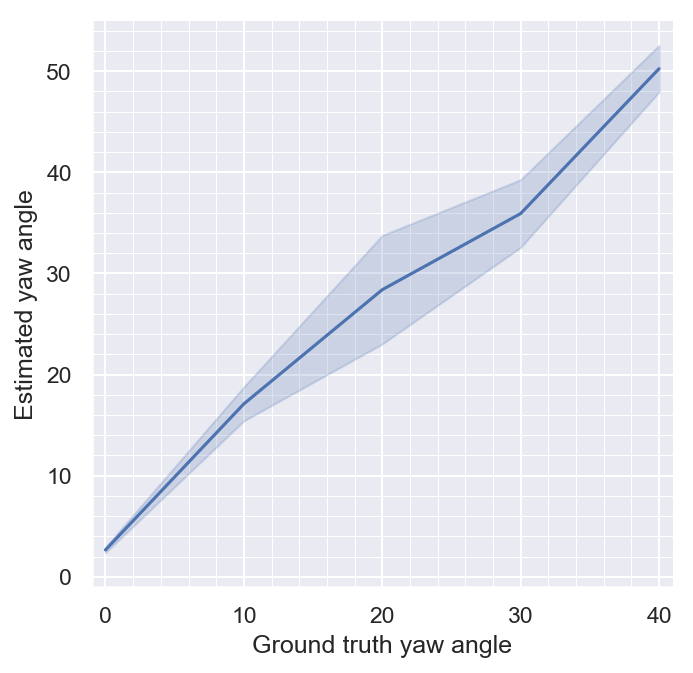
The effect of the face yaw angle on match similarity can be seen in the following figure:
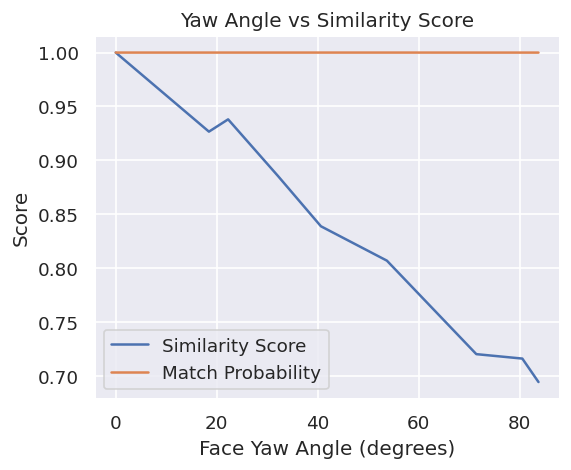
The effect of the face pitch angle on match similarity can be seen in the following figure:

- class tfsdk.Point¶
- property x¶
Coordinate along the horizontal axis, or pixel column.
- property y¶
Coordinate along the vertical axis, or pixel row.
- class tfsdk.FaceBoxAndLandmarks¶
-
- property landmarks¶
The list of facial landmark points (
Point) in this order: left eye, right eye, nose, left mouth corner, right mouth corner.
- property score¶
Likelihood of this being a true positive; a value lower than 0.85 indicates a high chance of being a false positive.